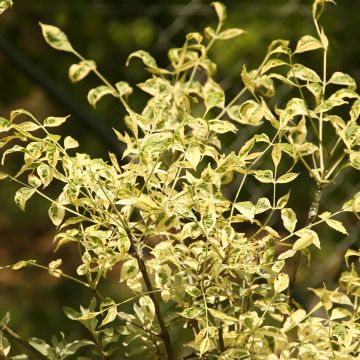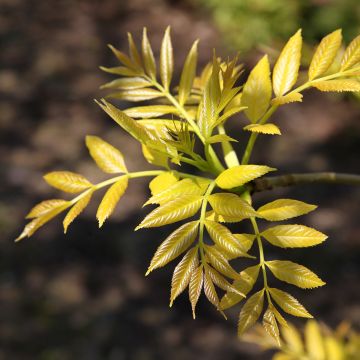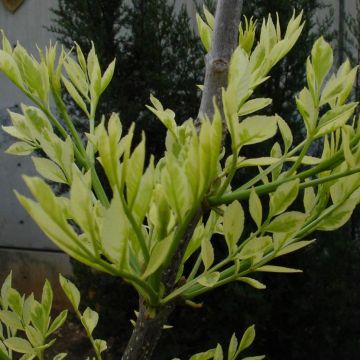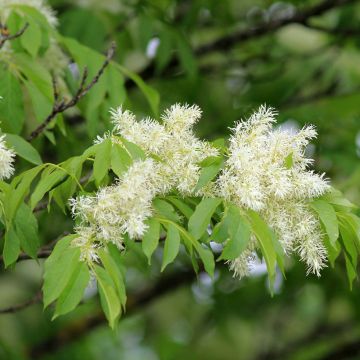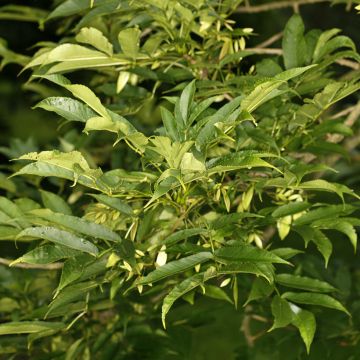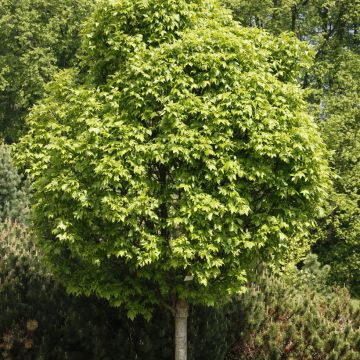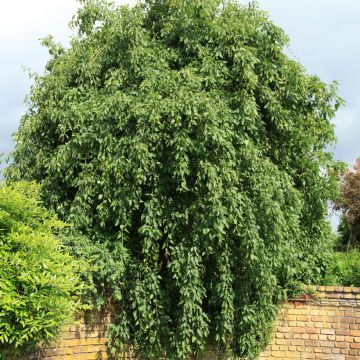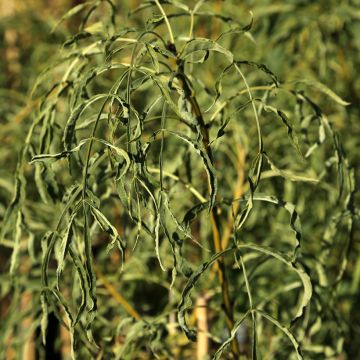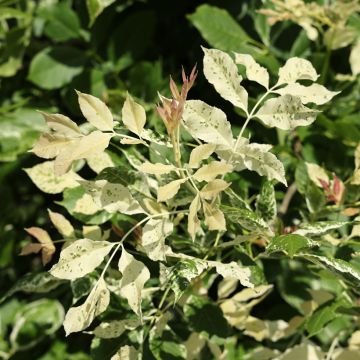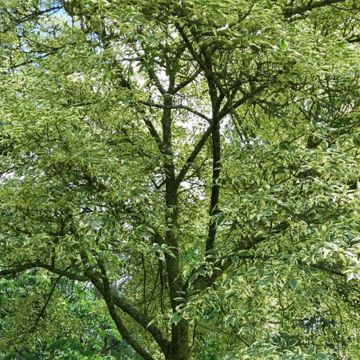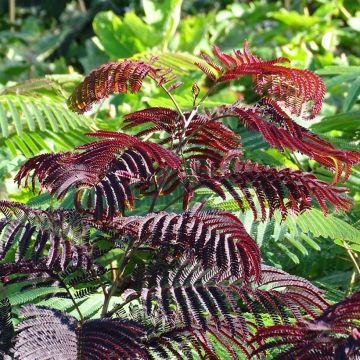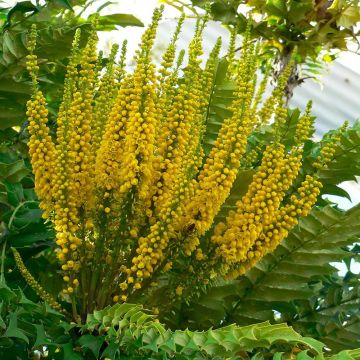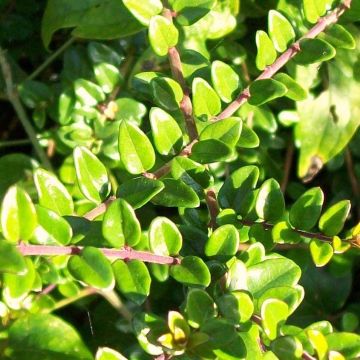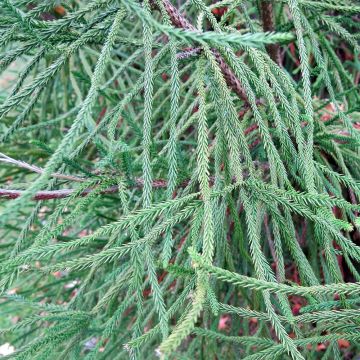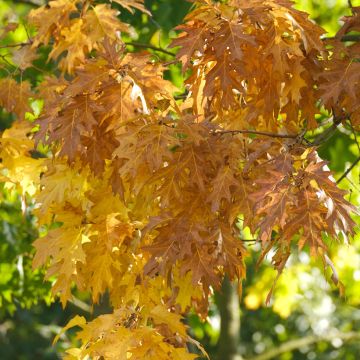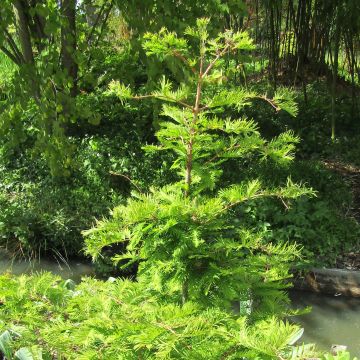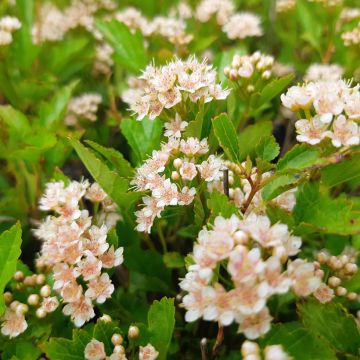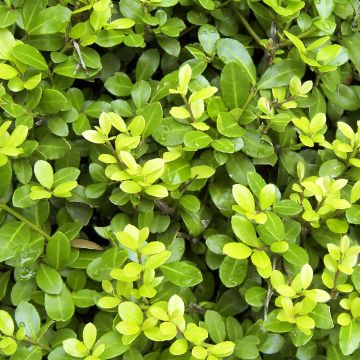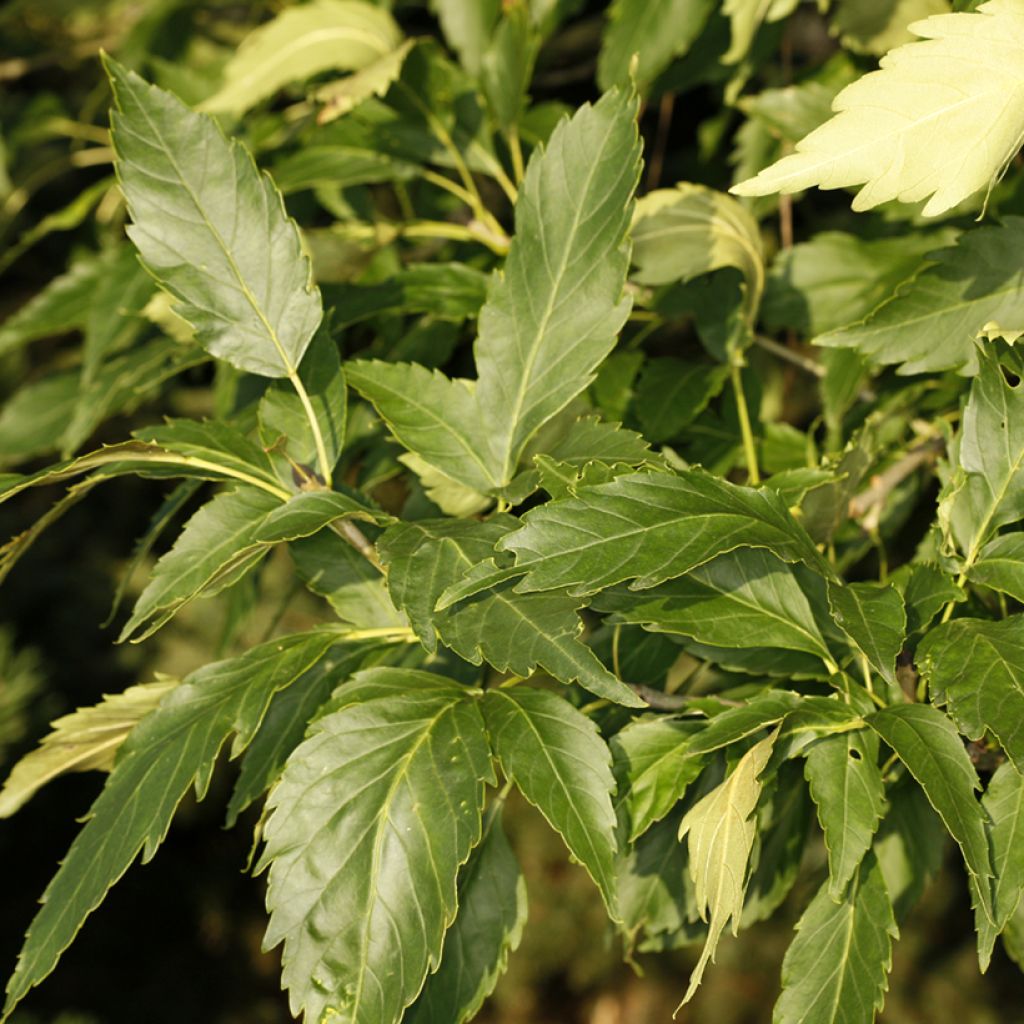

Fraxinus excelsior Zygmunt Krasiński - Ash
Fraxinus excelsior Zygmunt Krasiński - Ash
Fraxinus excelsior Zygmunt Krasiński
Ash, European Ash, Common Ash
Special offer!
Receive a €20 voucher for any order over €90 (excluding delivery costs, credit notes, and plastic-free options)!
1- Add your favorite plants to your cart.
2- Once you have reached €90, confirm your order (you can even choose the delivery date!).
3- As soon as your order is shipped, you will receive an email containing your voucher code, valid for 3 months (90 days).
Your voucher is unique and can only be used once, for any order with a minimum value of €20, excluding delivery costs.
Can be combined with other current offers, non-divisible and non-refundable.
Home or relay delivery (depending on size and destination)
Schedule delivery date,
and select date in basket
This plant carries a 24 months recovery warranty
More information
We guarantee the quality of our plants for a full growing cycle, and will replace at our expense any plant that fails to recover under normal climatic and planting conditions.
Does this plant fit my garden?
Set up your Plantfit profile →
Description
Fraxinus excelsior 'Zygmunt Krasiński' is a common Ash tree that stands out with its simple leaves or leaves composed of only three leaflets. It is a tall and majestic tree, with black buds that stand out on the grey branches. Its straight trunk supports a more or less conical crown, which provides light shade. The foliage turns yellow in autumn before falling to the ground. It is not afraid of severe frost and adapts to most soils that remain moist. This Ash tree can be planted in isolation, along the edge of a body of water, or as a background plant in a large flowerbed.
The Ash tree belongs to the Oleaceae family, which takes its name from the Olive tree (Olea) and includes several ornamental genera, such as Lilacs, Phyllirea, and the lesser-known White Forsythia (Abeliophyllum distichum). There are about sixty-five species of Ash trees, the vast majority of which are recognised by their odd-pinnate leaves (composed of an odd number of leaflets, due to the terminal leaflet), which are opposite or sometimes grouped in threes. Fraxinus excelsior is the common Ash tree, widespread from Europe to the Caucasus and as far as northern Anatolia. It is a fast-growing tree that can easily reach a height of over 30 metres and grows in forests and near lakes and rivers. It has compound leaves with 7 to 13 leaflets measuring 20 to 40 cm in length. Its inconspicuous greenish-yellow flowering occurs in April, before the leaves emerge.
Fraxinus excelsior 'Zygmunt Krasiński' is one of the few varieties with simple or weakly compound leaves, like the 'Diversifolia' Ash tree. In this tree, the leaves are elongated and simple, or composed only of three leaflets. The original specimen was found in a park in Opinogóra, Poland, the residence of Zygmunt Krasiński's father, as well as his son, who is buried there. Z. Krasiński was a 19th-century poet and writer, a prominent figure in Romanticism, and also the godson of Napoleon Bonaparte. Apart from its atypical foliage, this Ash tree is otherwise quite similar to the botanical species. It forms a large tree with a more or less conical to rounded crown, carried by a straight trunk covered with greyish bark that cracks over time. The black buds are clearly visible on the grey branches and are characteristic of the species. The dark green leaves are reduced to a single oversized, elongated leaflet which can reach 15 cm in length. Alternatively, they are trifoliate, composed of three leaflets, a configuration that is uncommon in trees but can be found in the Samara Elm (Ptelea trifoliata), for example. Depending on the climate and soil, they turn yellow to varying degrees before falling, which brings light to the garden at the end of the season. However, the flowering is too insignificant to be ornamental. It appears very early, in April, in the form of small female flowers that are greenish-yellow or male flowers tinged with purple that turn yellow after pollination. The resulting fruit, called samara, has a lanceolate shape, initially yellow-green and eventually turning brown. Gathered in clusters, these fruits have no more decorative value than the inflorescences.
Easy to grow in most moist soils and highly resistant to cold, this 'Zygmunt Krasiński' Ash tree will primarily interest rarity enthusiasts with large properties. To create surprise, accompany it with other unusual plants, such as the Myrsine-Leaved Oak (Quercus myrsinifolia), which will intrigue many. It's difficult to recognise an Oak in this small tree with a spreading habit and narrow, barely serrated leaves, which turn purple in autumn. The Hornbeam-Leaved Maple (Acer carpinifolium) also confuses with its leaves that closely resemble those of the Hornbeam and take on beautiful autumnal colours. Only its characteristic Maple fruits (double samaras) betray its belonging to this genus of trees. To complete your unusual scene, plant a Seaside Willow (Salix elaeagnos 'Angustifolia'), another botanical trap that will deceive onlookers with its extremely fine and elegant dark green foliage. This time, it will be the yellow catkins that will give a clue to knowledgeable observers...
Plant it as a specimen on a lawn to enjoy its characteristic silhouette, or even integrate it into a bed of various plants. In this case, surround it with low-growing plants to not hinder its development and allow it to showcase its attractive habit. Under its protective shade, you can plant a carpet of Variegated Japanese Spurge (Pachysandra terminalis 'Variegata'), an evergreen ground cover with dark green foliage delicately edged in white. The European Spindle Tree, or Euonymus europaeus, with its slightly wild appearance, will also blend well with your Ash tree and create a stunning colour contrast when its foliage turns purple and red in autumn. Additionally, it produces pink and orange fruits that are highly decorative (but be careful, as they are also toxic). And to bring winter colours to your scene, plant the Yellow Dogwood (Cornus stolonifera 'Flaviramea'), a Cornus with highly decorative yellow wood that you can plant in front of your Ash tree without hindering it, as this shrub does not exceed 2 metres in height and benefits from being pruned short each year to promote the growth of bright young shoots.
The common Ash tree, or Fraxinus excelsior, is a large tree that is very common in forests. It is recognisable by its velvety black floral buds and its lanceolate leaves, which are dark green and turn yellow in autumn. Over the years, this tree develops an elegant habit, with a very vertical trunk and a light and elongated crown that provides pleasant shade in summer. Highly resistant to cold and easy to grow in any type of non-scorching exposure and ordinary soil, including limestone, its ornamental qualities are enhanced by its free form. It will find a place as a specimen tree in a large garden, where it will provide pleasant shade in summer.
Fraxinus excelsior, commonly known as the common Ash tree or European Ash, is a tree belonging to the Oleaceae family, just like the olive tree and lilac. It is native to Europe, Scandinavia, and Russia, where it is commonly found on riverbanks and shores, as well as in forests.
This Ash tree has an upright habit. It develops a vertical, well-exposed trunk, topped by a crown with a rounded to elongated shape, which is rather closed when the tree is young and opens up over the years. At maturity, the crown is open, with a light appearance, and the bark covering the trunk becomes grey, deeply fissured, and scaly. It has a relatively fast growth rate, typically reaching between 30 and 40 metres in height and 20 metres in width at maturity. The deciduous foliage is very fine and consists of leaves composed of 9 to 13 narrow and lanceolate leaflets, measuring 5 to 12 cm in length. They are dark green and turn yellow in autumn. The flowering occurs in spring, before the leaves emerge, in the form of cream-yellow panicles. After pollination, they are followed by samaras measuring 2 to 4.5 cm in length.
Perfectly hardy and with limited requirements, the common Ash tree tolerates any non-scorching exposure and adapts to any ordinary soil, including limestone, although its growth will be more significant in fertile, deep, and moist soil. It tolerates pruning very well, even severe pruning, as it produces new shoots from the crown. If the conditions are suitable, it tends to self-seed very easily. In its free form, its foliage and elegant habit give it true ornamental qualities. It will find a place as a specimen tree in a large garden, where it will provide pleasant shade in summer.
Report an error about the product description
Plant habit
Flowering
Foliage
Safety measures
Botanical data
Fraxinus
excelsior
Zygmunt Krasiński
Oleaceae
Ash, European Ash, Common Ash
Cultivar or hybrid
atteinterespiratoire
Cette plante peut entraîner des symptômes allergiques.
Evitez de la planter si vous ou vos proches souffrez de rhinite saisonnière ("rhume des foins").
Davantage d'informations sur https://plantes-risque.info
Other Fraxinus - Ash tree
View all →Planting and care
Plant your Fraxinus excelsior 'Zygmunt Krasiński' in autumn or spring, choosing a sunny but not scorching location with deep soil. Above all, consider the space it will take up in the long term to avoid it outgrowing its space after a few years of growth. If necessary, create a drainage pit with stones if your soil is suffocating. If your soil is poor, adding leaf compost mixed with planting substrate will help increase water retention. Water regularly during the summer following planting and make sure to protect it from prolonged droughts for another year. A good 8/10 cm thick mulch can help keep the base moist and reduce the need for watering. Keep in mind that this riverside tree requires consistently moist soil, at least at depth. It is perfectly frost-resistant. Pruning involves balancing the tree's habit by aerating the centre of the canopy every three years or so.
Planting period
Intended location
Care
Planting & care advice
This item has not been reviewed yet - be the first to leave a review about it.
Similar products
Haven't found what you were looking for?
Hardiness is the lowest winter temperature a plant can endure without suffering serious damage or even dying. However, hardiness is affected by location (a sheltered area, such as a patio), protection (winter cover) and soil type (hardiness is improved by well-drained soil).

Photo Sharing Terms & Conditions
In order to encourage gardeners to interact and share their experiences, Promesse de fleurs offers various media enabling content to be uploaded onto its Site - in particular via the ‘Photo sharing’ module.
The User agrees to refrain from:
- Posting any content that is illegal, prejudicial, insulting, racist, inciteful to hatred, revisionist, contrary to public decency, that infringes on privacy or on the privacy rights of third parties, in particular the publicity rights of persons and goods, intellectual property rights, or the right to privacy.
- Submitting content on behalf of a third party;
- Impersonate the identity of a third party and/or publish any personal information about a third party;
In general, the User undertakes to refrain from any unethical behaviour.
All Content (in particular text, comments, files, images, photos, videos, creative works, etc.), which may be subject to property or intellectual property rights, image or other private rights, shall remain the property of the User, subject to the limited rights granted by the terms of the licence granted by Promesse de fleurs as stated below. Users are at liberty to publish or not to publish such Content on the Site, notably via the ‘Photo Sharing’ facility, and accept that this Content shall be made public and freely accessible, notably on the Internet.
Users further acknowledge, undertake to have ,and guarantee that they hold all necessary rights and permissions to publish such material on the Site, in particular with regard to the legislation in force pertaining to any privacy, property, intellectual property, image, or contractual rights, or rights of any other nature. By publishing such Content on the Site, Users acknowledge accepting full liability as publishers of the Content within the meaning of the law, and grant Promesse de fleurs, free of charge, an inclusive, worldwide licence for the said Content for the entire duration of its publication, including all reproduction, representation, up/downloading, displaying, performing, transmission, and storage rights.
Users also grant permission for their name to be linked to the Content and accept that this link may not always be made available.
By engaging in posting material, Users consent to their Content becoming automatically accessible on the Internet, in particular on other sites and/or blogs and/or web pages of the Promesse de fleurs site, including in particular social pages and the Promesse de fleurs catalogue.
Users may secure the removal of entrusted content free of charge by issuing a simple request via our contact form.
The flowering period indicated on our website applies to countries and regions located in USDA zone 8 (France, the United Kingdom, Ireland, the Netherlands, etc.)
It will vary according to where you live:
- In zones 9 to 10 (Italy, Spain, Greece, etc.), flowering will occur about 2 to 4 weeks earlier.
- In zones 6 to 7 (Germany, Poland, Slovenia, and lower mountainous regions), flowering will be delayed by 2 to 3 weeks.
- In zone 5 (Central Europe, Scandinavia), blooming will be delayed by 3 to 5 weeks.
In temperate climates, pruning of spring-flowering shrubs (forsythia, spireas, etc.) should be done just after flowering.
Pruning of summer-flowering shrubs (Indian Lilac, Perovskia, etc.) can be done in winter or spring.
In cold regions as well as with frost-sensitive plants, avoid pruning too early when severe frosts may still occur.
The planting period indicated on our website applies to countries and regions located in USDA zone 8 (France, United Kingdom, Ireland, Netherlands).
It will vary according to where you live:
- In Mediterranean zones (Marseille, Madrid, Milan, etc.), autumn and winter are the best planting periods.
- In continental zones (Strasbourg, Munich, Vienna, etc.), delay planting by 2 to 3 weeks in spring and bring it forward by 2 to 4 weeks in autumn.
- In mountainous regions (the Alps, Pyrenees, Carpathians, etc.), it is best to plant in late spring (May-June) or late summer (August-September).
The harvesting period indicated on our website applies to countries and regions in USDA zone 8 (France, England, Ireland, the Netherlands).
In colder areas (Scandinavia, Poland, Austria...) fruit and vegetable harvests are likely to be delayed by 3-4 weeks.
In warmer areas (Italy, Spain, Greece, etc.), harvesting will probably take place earlier, depending on weather conditions.
The sowing periods indicated on our website apply to countries and regions within USDA Zone 8 (France, UK, Ireland, Netherlands).
In colder areas (Scandinavia, Poland, Austria...), delay any outdoor sowing by 3-4 weeks, or sow under glass.
In warmer climes (Italy, Spain, Greece, etc.), bring outdoor sowing forward by a few weeks.






























